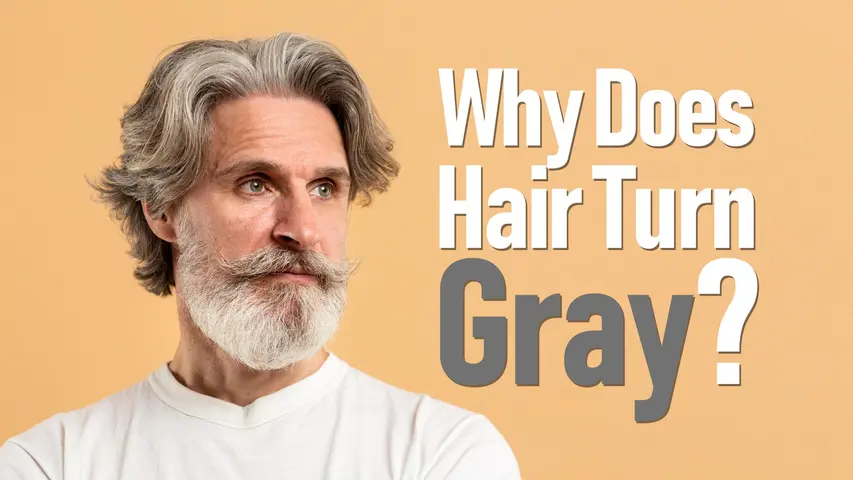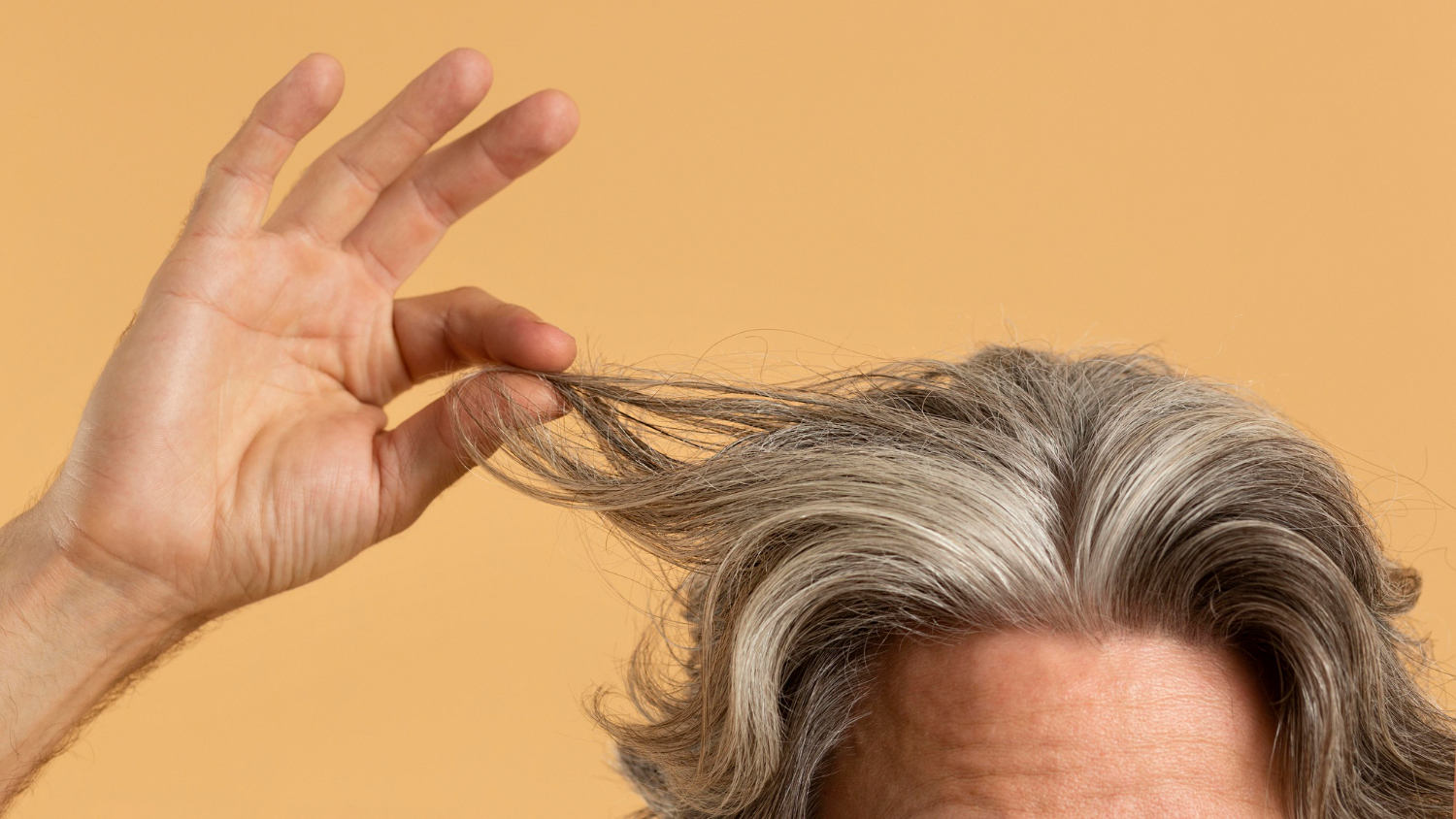- Why Is My Hair White at 20s?
- What Is the Average Age to See Gray or White Hair?
- Can You Stop Premature Graying?
- Can Hair Turn Gray or White Overnight?
- Why Do Gray Hairs Have a Different Texture?
- Can White Hair Turn Black Again?
- Does Pulling One Gray Hair Cause More to Grow in its Place?
- Final Thought
Contents
Why Does Hair Turn Gray?

The color of our hair is decided by a substance called Melanin made by cells, in the hair follicle. As we get older these cells that produce melanin slow down causing a decrease in melanin levels and the emergence of white hair. The graying process is intricate. Can be affected by factors, like genetics, stress and specific health issues.
Why Is My Hair White at 20s?
Some people might notice their hair turning gray or white, in their 20s or even earlier. This change is often linked to genetics as some individuals are genetically inclined to experience graying due to their family history. Additionally certain health conditions like thyroid issues vitamin B12 deficiency and autoimmune disorders such as vitiligo or alopecia areata can also lead to whitening of hair.
Stress is another factor that could play a role in causing graying or whitening of hair. Prolonged stress may speed up the loss of melanin producing cells, in the hair follicles resulting in an appearance of white hair. However it's essential to understand that stress alone is unlikely to be the cause of graying or whitening of hair for most individuals.
What Is the Average Age to See Gray or White Hair?
The age when people first notice white hair can vary greatly. Typically it's normal to see a strands in your mid 30s. However some individuals may start graying in their 20s or as late, as their 50s or 60s.
Genetics play a role, in determining when graying begins. If your parents or grandparents went gray early you might follow the pattern. Ethnicity and gender can also impact the timing of white hair appearance.
Can You Stop Premature Graying?
Regrettably there isn't a method to halt or reverse the early onset of gray or white hair. However addressing any health issues that might contribute to graying like thyroid problems or lacking essential vitamins could potentially slow down the process.
Making lifestyle changes to reduce stress levels, such, as engaging in activity mindfulness practices or relaxation techniques might also help alleviate the impact of stress, on hair coloration. Moreover following a rounded diet packed with antioxidants and vital nutrients can promote hair wellness.

Can Hair Turn Gray or White Overnight?
While it's a common myth, hair cannot turn gray or white overnight. The process of graying or whitening is gradual and occurs over time as the pigment-producing cells in the hair follicles become less active.
However, there are instances where the appearance of graying or whitening may seem sudden. For example, if someone experiences a significant amount of stress or trauma, it can trigger a condition called telogen effluvium, which causes excessive shedding of pigmented hair. As the new, unpigmented hair grows in, it may create the illusion of sudden graying or whitening.
Why Do Gray Hairs Have a Different Texture?
Gray or white hairs often have a different texture compared to pigmented hair. This is because the absence of melanin, the pigment that gives hair its color, can affect the structure and properties of the hair shaft.
Melanin acts as a natural protectant and conditioner for hair, helping to maintain its strength and elasticity. Without melanin, gray or white hairs can become coarser, drier, and more brittle. They may also appear more wiry or unruly, making them more difficult to style or manage.
Can White Hair Turn Black Again?
Once a strand of hair has lost its pigmentation and turned white or gray, it is highly unlikely that it will regain its original color naturally. The process of graying or whitening is typically irreversible, as the pigment-producing cells in the hair follicle become less active or stop functioning altogether.
However, in some rare cases, individuals who have experienced premature graying or whitening due to a temporary condition, such as a vitamin deficiency or severe stress, may see a partial or complete restoration of their natural hair color once the underlying issue is addressed.
Does Pulling One Gray Hair Cause More to Grow in its Place?
It's a misconception that has been disproven by studies.
· Removing a white hair doesn't lead to more gray hairs sprouting in its place.
· Each hair follicle is, in charge of producing one hair at a time and the color of the hair is determined by the pigment producing cells activity within that follicle.
· Although plucking out a hair may temporarily eliminate it the new hair that grows back will match the ones color unless the pigment producing cells, in that follicle have become less active or stopped working entirely.
Final Thought
As we grow older our hair naturally turns gray or white influenced by genetics and our overall health. While theres no guaranteed method to halt or undo this transformation completely adopting a lifestyle and managing any health issues can lessen premature graying or whitening of hair. Embracing the aging process prioritizing hair wellness and accepting oneself are aspects to consider.
- Why Is My Hair White at 20s?
- What Is the Average Age to See Gray or White Hair?
- Can You Stop Premature Graying?
- Can Hair Turn Gray or White Overnight?
- Why Do Gray Hairs Have a Different Texture?
- Can White Hair Turn Black Again?
- Does Pulling One Gray Hair Cause More to Grow in its Place?
- Final Thought
Contents
- Dental Treatment
- Hair Transplant
- Plastic Surgery
Categories
- Dental Treatment
- Hair Transplant
- Plastic Surgery


























